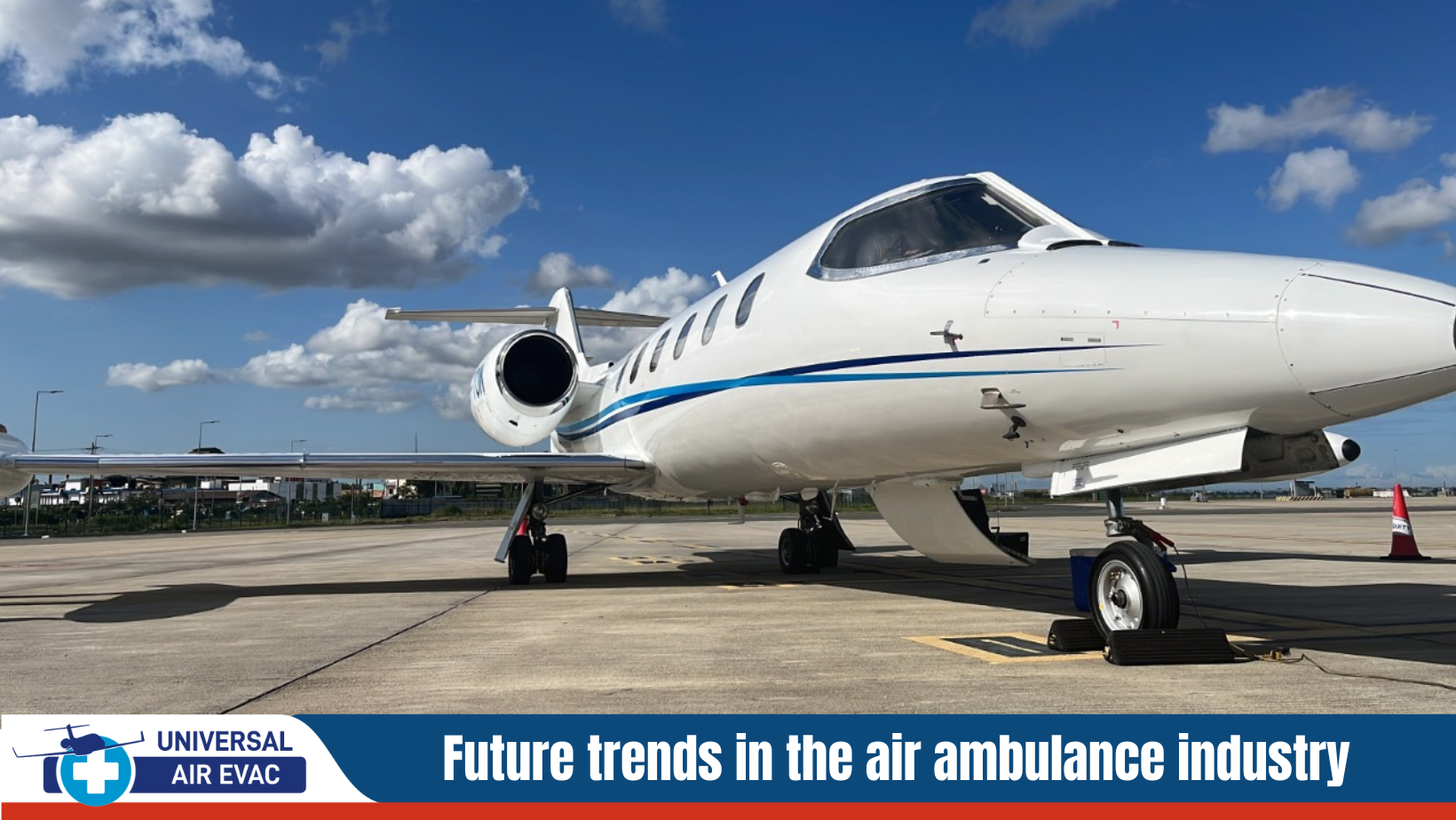Future Trends in the Air Ambulance Industry: A Convergence of Aviation and Healthcare

In an era of rapid technological advancements and evolving healthcare needs, the air ambulance industry stands at the cusp of transformative change. This sector, which blends aviation expertise with urgent medical care, has throughout the past, continuously gone through changes, and is expected to continue to do so in the future.
In fact, many predict that the industry is poised to undergo significant developments in the near future that promise to enhance efficiency, safety, and patient outcomes. Is technology and AI going to have an impact, what European advancements can we expect in Africa? We thought we would take a look at advancements in the field in general looking at both aviation as well as the medical side.
Aviation Advancements
Predictive Maintenance and Integration
In the past, the aviation industry relied more on reactive maintenance than any other type of maintenance. This was mostly due to the costs involved, however, it was also a method of ensuring the aircraft stayed functional for longer. The future of air ambulance operations is now looking to predictive maintenance which is a revolutionary approach that leverages data analytics to foresee potential issues before they manifest.
By employing predictive algorithms and real-time monitoring systems, operators can pre-emptively address maintenance needs, thereby minimising downtime and ensuring aircraft readiness. Moreover, the integration of all systems – from avionics to medical equipment – into unified platforms will streamline operational efficiency.
Training and Operational Excellence
The emphasis on training within the air ambulance sector is intensifying. With advancements in simulation technologies and virtual reality (VR), pilots and medical crews can undergo immersive, scenario-based training that replicates real-world challenges. This proactive approach prepares teams to handle diverse medical emergencies and operational scenarios with precision and confidence.
Furthermore, regulatory bodies are enforcing stringent standards to ensure operational excellence across the industry. Continuous improvement initiatives and certification programs are becoming standard practice, fostering a culture of safety and professionalism among air ambulance providers globally.
Regional Disparities in Fleet Upgrades
While Europe leads in fleet modernisation efforts, with a strong push towards adopting state-of-the-art aircraft equipped with cutting-edge technologies, regions like Africa face unique challenges. The same, however, is not reflected in Africa.
Economic constraints and infrastructure limitations may impede fleet upgrades in African countries, necessitating innovative solutions tailored to local contexts. These challenges underscore the need for adaptive strategies that balance technological advancement with practical feasibility in diverse global settings.
Healthcare Innovations
Technological Advancements in Medical Equipment
Lately, portable ultrasound devices have been increasingly prominent. These devices have evolved to be smaller and more user-friendly, becoming indispensable for diagnosing and monitoring patients during air transport. They provide real-time imaging, helping medical teams to quickly and accurately assess conditions. Integrating these devices into air evacuation services enhances patient care by enabling timely interventions and informed decision-making, thereby improving medical transport outcomes.
This capability proves particularly invaluable in remote locations where traditional diagnostic tools are scarce or absent. For instance, in a scenario involving a trauma patient in a remote area without access to imaging facilities, our team's ultrasound can often provide crucial initial imaging, significantly aiding in clinical decisions.
Mobility and Connectivity
Mobile technology is revolutionising healthcare delivery in the air ambulance sector. Doctors will be able to control onboard equipment remotely via smartphone applications, adjusting settings and receiving critical updates in transit.
This seamless connectivity facilitates collaborative decision-making between air and ground medical teams, enhancing the continuity of care from the point of rescue to definitive treatment.
Evolving Clinical Practices
As technology evolves, so too does clinical practice within air ambulance services. More training is not only going into the pilots, and crew on the ground, but the medical crew too, in order for them to perform several duties at the same time.
These advancements enable providers to deliver specialised medical interventions that were previously confined to hospital settings, thereby expanding the scope of emergency medical services available during aerial missions.
Conclusion
The future of the air ambulance industry is intricately woven with technological innovation and collaborative advancements in aviation and healthcare. Predictive maintenance, integrated systems, and enhanced training protocols are set to elevate operational standards, while AI-driven medical equipment and mobile healthcare solutions promise to redefine patient care paradigms.
By prioritising safety, efficiency, and patient-centric care, the air ambulance sector is poised to not only meet but exceed the evolving demands of emergency medical transport in the years to come. At Universal Air Evac, we pride ourselves on staying on top of the ever-developing curve and ensuring that patients' needs are met on every flight.

